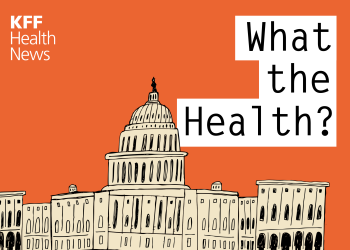Jose Luis Pelaez Inc | DigitalVision | Getty Images
Health care inflation is fueling higher coverage costs, setting the stage for what could be the largest increase in health care spending by large employers in 15 years.
Medical care costs in August rose 4.2% on an annualized basis, according to the Labor Department’s Consumer Price Index, compared with an overall inflation rate of 2.9%. The cost of doctor visits rose 3.5%, while hospital and outpatient services jumped 5.3%.
These price increases are contributing to higher health insurance costs for 2026. Consumers who don’t qualify for government subsidies to purchase health coverage on the Affordable Care Act exchanges could face double-digit premium increases for next year, according to initial filings from insurers.
Workers with employer health coverage may also face higher premium and out-of-pocket costs next year.
Large employers project their overall health coverage costs will increase by an average of 9% in 2026, according to several business group surveys, which would be the highest level of health care inflation since 2010.
More than half of the companies surveyed by benefits consulting firm Mercer earlier this year said they plan to pass on some of those raises to workers, but the health care business group says most of the large employers in its survey are looking for other ways to cut costs.
“Employers have gone on a rampage in every way possible, from passing on costs to employees. This year, we’re seeing the first indication that they may look to pass some of that on to employees, but again, only as a last resort. They’re going to try to pull as many levers as possible,” said Ellen Kelsay, president and CEO of BGH.
Employer Cost Mediations: Cancer Drugs and GLP-1
Shana Novak | Peter | Getty Images
Prescription drug prices rose 0.9% in August, according to the Consumer Price Index, which considers a range of widely used generic and brand name drugs.
But for large employers, expensive drugs are the main drivers of higher health care costs.
Companies surveyed by BGH forecast a 12% increase in pharmaceutical costs next year, on top of an 11% rise this year fueled by cancer drugs and diabetes and obesity treatments like Novo Nordisk’s Wegovy and Ely Lilly Zepbound.
“Cancers were for the fourth year in a row the number one condition driving health care costs – cancers at younger ages, later stage diagnoses,” said Kelsay, who added that expensive weight loss drugs are a close second.
“When it comes to obesity treatment, that’s the space that’s been the most frothy in the last two to three years and that’s fueled a lot of this pharmaceutical spending,” she said.
According to Mercer, nearly two-thirds of employers with 20,000 or more workers provide access to weight-loss drugs known as GLP-1. Less than half of small employers surveyed planned to offer access in 2026.
With growing demand for medications, more companies are tightening eligibility requirements and beginning to explore more affordable ways to provide access to their employees, including the cash register market.
Cash-based GLP-1
A telehealth executive whose company offers GLP-1 compounds told CNBC that some large employers let workers know they can use purchasing savings accounts to buy the drugs for less in the cash market.
“They’re concerned about the cost (of the drugs), but that doesn’t mean they don’t think their employees shouldn’t have access to it. They just don’t want to have to pay for it,” said the executive, who spoke on condition of anonymity because of the confidential nature of the discussions.
Health Accounts data shows more workers are turning to direct-to-consumer options, including Eli Lilly Direct’s Novocare Online Pharmacies and Novo Nordisk, both of which offer their weight-loss drugs at about half the list prices of more than $1,000.
GLP-1 purchases are now the largest category of cash payment expenses in pre-tax flexible spending and health savings accounts, for expenses not covered by insurance, according to Paytor Paytient CEO.
“We’re seeing a three-fold increase from last year to this year in usage among GLP-1-oriented providers. Those are places like Lilly Direct, like RO, like Hims & Hers, and it’s a growing segment,” said Brian Whorley, founder and CEO of Payntient.
But employers fear that the fund trend will leave low-income workers out of the equation because they can’t afford the out-of-pocket costs. This provokes discussions about how their companies can obtain cash payment pricing to help spur more equitable access for employees.
Self-insured employers contracted directly with so-called centers of excellence for specialized medical care such as cancer treatment and joint replacements. But they can’t do the same for many medications. Under agreements with pharmacy benefit management companies, or PBMS, drug manufacturers and employers are allegedly violating their contracts by using a direct cash payment process.
But employers are increasingly pressing PBMs for better options, says BGH’s Kelsay. They are beginning to consider new types of benefit managers, who offer new payment models for drugs in the development pipeline.
“There are new entities — some startups in this space — that are building products and solutions where they go on behalf of a group of employers coming together to negotiate with manufacturers on certain cell and gene therapies,” she said.
Paytient’s Whorley calls the challenge of making GLP-1s more affordable a stress-testing moment for employers and PBMs.
“They’re in a sort of perfect Venn diagram of clinically effective drugs that are changing people’s lives, that will increasingly force a choice” when it comes to funding, Whorley said. “If we get this right, this can provide a blueprint for any drugs like GLP-1s that…will present challenges for health plans.”









